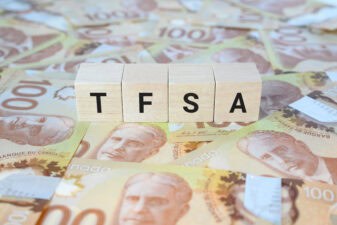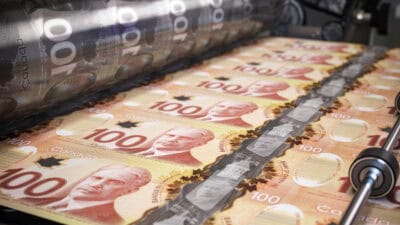For everyday investors, the Tax-Free Savings Account (TFSA) is a fantastic tool for growing your wealth without worrying about taxes on the earnings. But while it’s easy to get excited about the tax-free perks, there are a few common red flags that can catch investors off guard when the Canada Revenue Agency (CRA) comes knocking. Fortunately, with a bit of knowledge, these issues are easy to avoid. Let’s take a look at three CRA red flags for TFSA investors and, more importantly, how to steer clear of them.
Over-contributing
The first red flag is over-contributing to your TFSA. Every year, there’s a set contribution limit (for 2024, it’s $7,000), and once you hit that limit, any extra contributions will result in a 1% penalty per month on the excess amount.
It might be tempting to keep adding money to your TFSA, but keeping track of your contributions is key. If you’re unsure of your current limit, a quick check with the CRA through your online account can give you a clear picture. If you’ve accidentally over-contributed, you’ll want to withdraw the excess as soon as possible to avoid further penalties.
For a balanced approach to investing within your limits, consider investing in an exchange-traded fund (ETF) like Vanguard Growth ETF Portfolio (TSX:VGRO). This offers a diversified portfolio that grows within your TFSA’s annual limit.
Too much trading
Another red flag is trading too frequently within your TFSA. While it’s tempting to buy and sell stocks as market opportunities arise, the CRA may view your account as a business if you’re excessively trading.
This can trigger taxes on your profits, which defeats the purpose of the TFSA. So, what counts as too frequent? The CRA doesn’t provide a clear number, but if your trading activity looks more like day trading than long-term investing, you could raise eyebrows.
The solution? Focus on buying businesses, not stocks. Companies like BCE (TSX:BCE) that pay a steady dividend and have strong long-term potential are great for buy-and-hold strategies.
Foreign investments
The third red flag is holding foreign dividend-paying investments. While TFSAs offer tax-free growth, foreign dividends may still be subject to withholding taxes. For example, U.S. dividends in a TFSA are subject to a 15% withholding tax. This may not be a dealbreaker for many investors, but it does eat into your returns.
A better solution could be to hold Canadian dividend stocks, such as BCE, in your TFSA. You won’t have to worry about foreign tax implications. Plus, BCE’s dividend payout can help your TFSA grow consistently. VGRO ETF offers dividends as well, and investors can rest easy knowing those will all come in tax-free.
Foolish takeaway
Over-contributing, frequent trading, and foreign dividend taxes are all issues that can derail your TFSA plans, but there are easy fixes. By being mindful of your contribution limits, focusing on long-term investing, and choosing Canadian dividend stocks or ETFs like VGRO or BCE, you can avoid these CRA red flags altogether.
At the end of the day, a TFSA is one of the most valuable tools for Canadian investors. With a little planning and the right investment choices, you can avoid any CRA complications and focus on building your wealth. Keep your TFSA clean, steady, and growing so you can enjoy all the benefits without the hassle.









